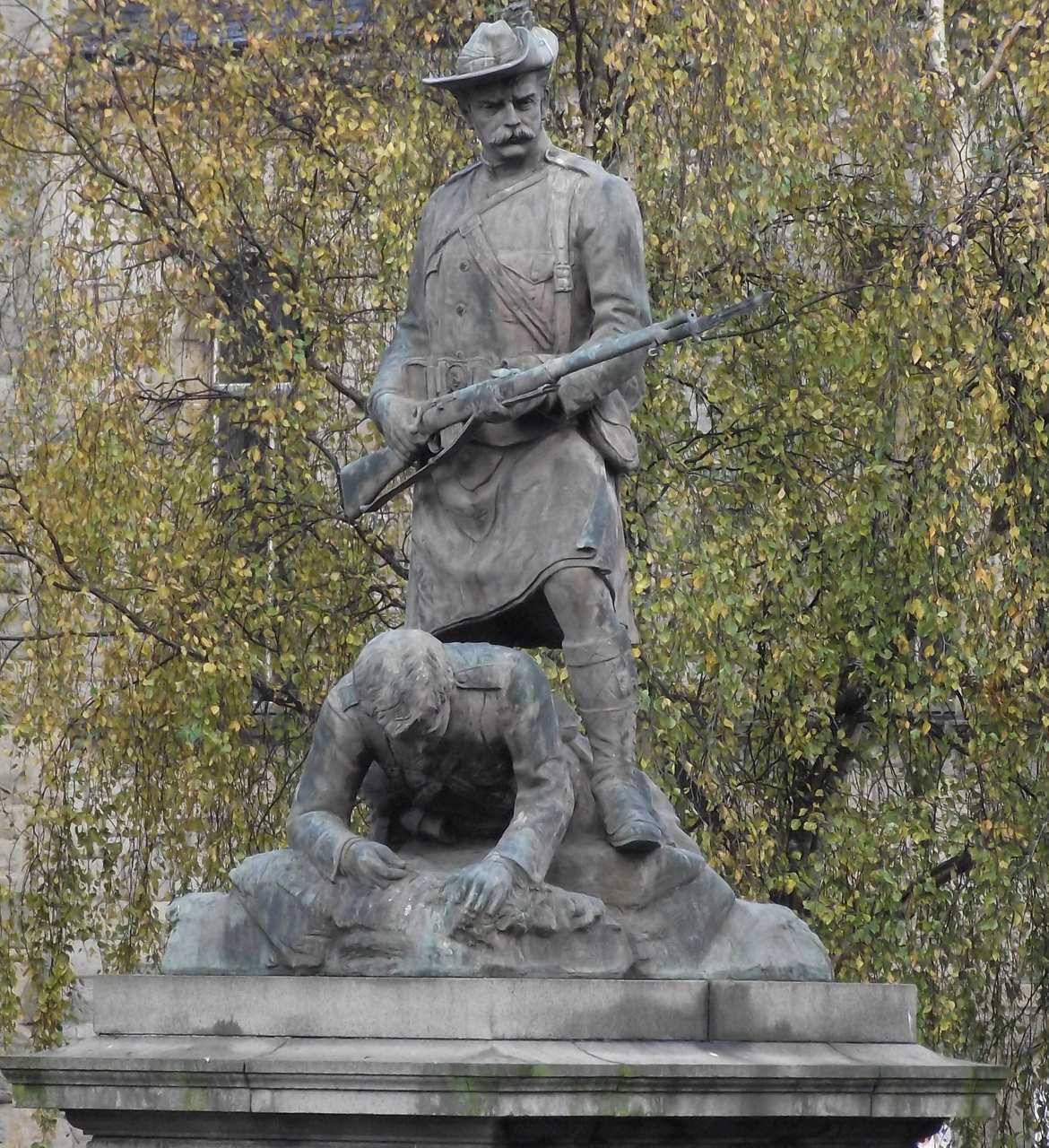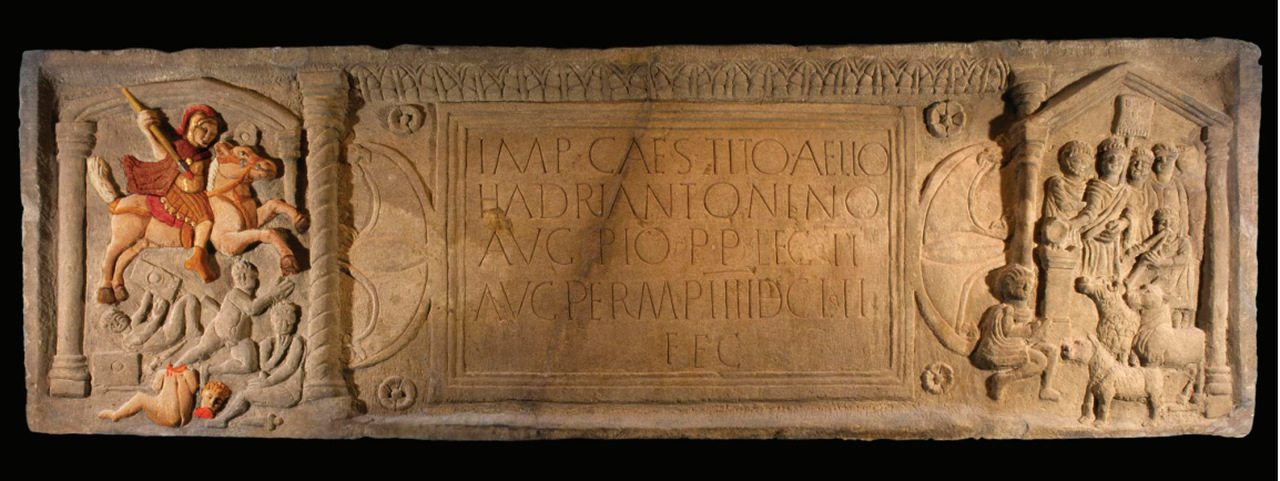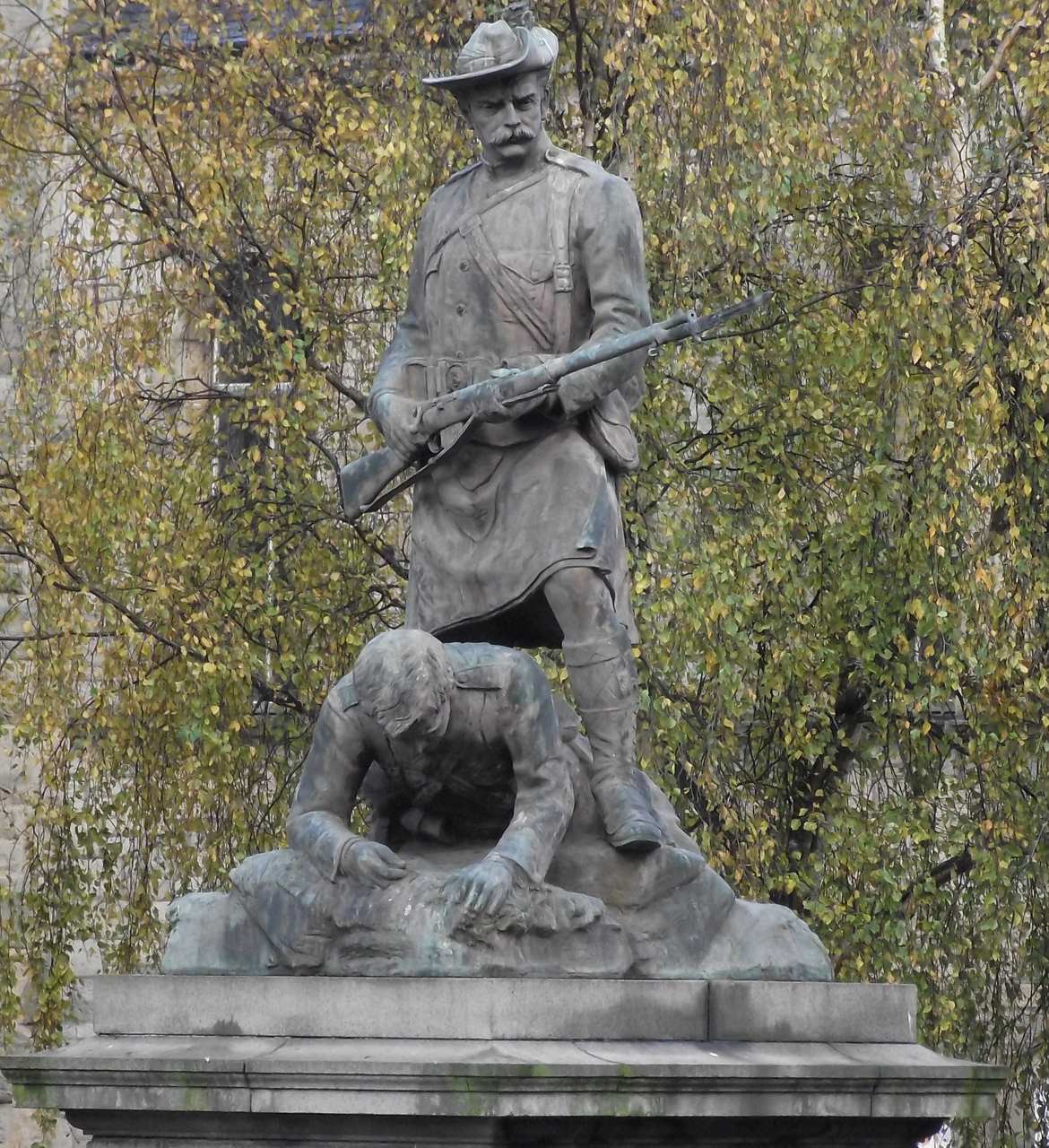Falkirk women were involved in supporting the families of those fighting in the Boer Wars – but their contributions depended on certain classed expectations…
The Memorial
The Boer War memorial on Newmarket Street, Falkirk, commemorates the Second Anglo-Boer War that took place between October 1899 and May 1902. The war memorial depicts “a kilted infantryman in a slouch hat, defending a wounded comrade” (Ronald “Part 1” p. 15). Underneath the statues, the monument presents a commemoration plaque that includes the names of the men from Falkirk and its districts that perished in the war. The history of the Boer War, the war between Dutch settlers, also called Boers, and the British, is well researched. For instance, Allan H. Ronald’s “Bairns and Boers” articles published in the 2013 issues of Calatria, the Falkirk Local History Society journal, gives a detailed account of the war and its links to Falkirk. The monument, however, does not commemorate the lesser known history and experiences of the families, wives and parents left behind in Falkirk and the surrounding area during the Boer War.


Women and War
The Boer War and the collection of funds for the dependants of soldiers and reservists offered possibilities for middle-class and upper-class women to support the war effort by donating to funds. The Falkirk Herald notes on 25 November 1899, that for the creation of a War Fund in Denny “Mrs John Collins wrote enclosing £5 5s, which she wished especially devoted the widow’s fund; Mrs Don Gillies of Denovan made intimation that she had already collected the sum of £7 15s 6d” (p.5). The Falkirk Herald explicitly calls for women to volunteer in supporting the reservists’ and soldiers’ dependents. On 20 December 1899, the newspaper writes:
"Every parish in the United Kingdom should have its lady visitor or visitors for soldiers’ wives; and the functions of these visitors should not terminate with inquiries into financial circumstances, and into the necessity of supplementing earnings or allowances for pecuniary gifts, but should extend to an endeavour to assume the position of friends and counsellors, ready to give a helping hand in any or every emergency […]. A soldier’s wife should be able to feel confident that, if her husband is killed or wounded, the intelligence will soon reach her, not only through official but also through kindly channels, and that she will not be left alone to bear her trouble as best she may" (p. 7).
Class
Middle-class and upper-class women were called upon to look after the soldiers’ and reservists’ dependants. This included not only financial support but also moral support, to support the dependants emotionally in the case of bad news from the war. This call includes a notion of class as the lady visitors should also act as “counsellors.” Eliza Riedi, in “Assisting Mrs Tommy Atkins,” argues that volunteers, for instance, from the Soldiers’ and Sailors’ Family Association (SSFA) should not only support the dependants financially; part of their duties included finding employment for those not “in delicate health, or with young children” (Riedi, p.753). Indeed, the financial support from the Government was already insufficient for “on the strength” wives: women married to soldiers who had been granted the permission from the army to marry. In addition, charities did not attempt to completely compensate the loss of the family income that occurred with the soldiers and reservists being sent to war. Riedi points out that the financial support of the SSFA “was to make up the family income to two-thirds of soldier’s civilian wage” (Riedi p.751). The aim was “to maintain the family’s standard of living at its pre-war rate: the soldier would return to find his family as he had left them. Better off-families thus received more charitable aid than poorer ones” (Riedi p.751). Even the support available from charities was problematic.
Neither was it unconditional. Ronald describes how proceedings of funds were distributed among the wives and families of the reservists and soldiers. Referring to an article in the Falkirk Mail on 18 November 1899, Ronald mentions a meeting:
"at Larbert in the Free Church Hall “for the devising means of raising money for the relief of the wives and families of the Reserves who have been called to the front.” […] The chairman introduced Lady Alice Shaw Stewart (a daughter of the 4th Marquess of Bath) of Carnock House, near Airth, “who gave an account of how the district is being worked and how carefully each case is considered.” This, it must be said, smacks more of an approach to “the deserving poor” than one of “solidarity forever.” Indeed, there is more than a whiff, in that “careful consideration of each case”" (“Part 1” p.20).
Exemplary Behaviour
The wives of soldiers were subjected to specific expectations regarding their behaviour. Janis Lomas, in “Delicate duties,” presents the attitudes and expectations towards soldiers’ wives and especially war widows: “they were thought to be, at worst, “drunken slatterns” and, at best, on a par with servants and therefore in need of “watching”. In addition, women “had to live up to [their husbands’] heroic sacrifice by honouring [their] memory through [their] respectable behaviour. A war widow who did not behave in an exemplary manner risked reprobation” (Lomas p.137). Not only war widows but soldiers’ and reservists’ wives were expected to demonstrate exemplary behaviour. The women’s support depended very much on this behaviour, or how it was perceived by the volunteers. Riedi explains that relief was “conditional upon “sobriety and good conduct”, assessed by SSFA volunteers through weekly home visits. Those failing the sobriety test might still be assisted, but in food and rent payments rather than cash” (Riedi p.755). Thus, the consumption of alcohol and the display of “immoral” behaviour could make a woman less “deserving” of support, to use Ronald’s words.
Middle- and upper-class women also engaged in the support of families of soldiers and reservists fighting in the Boer war. Although support for the soldiers’ and reservists’ families was unanimous, receiving support was a different matter. Middle- and upper-class women donated money, organized charity events to collect more money and offered “emotional” and counselling, as well as financial support. However, in order to receive these funds, the families had to comply with middle-class and upper-class expectations.
We would like to thank Russ Edwards, Hidden Heritage Online: Statues and Monuments volunteer, for his help with this story.
By Alexandra Abletshauser, Hidden Heritage Online: Statues and Monuments volunteer 2020.

